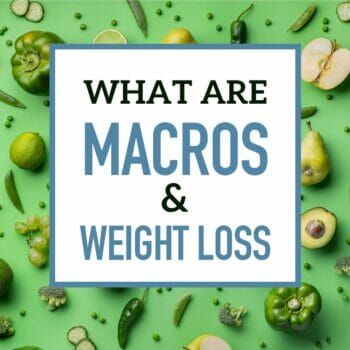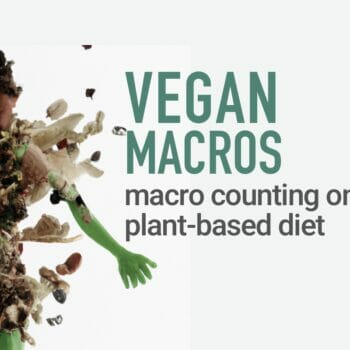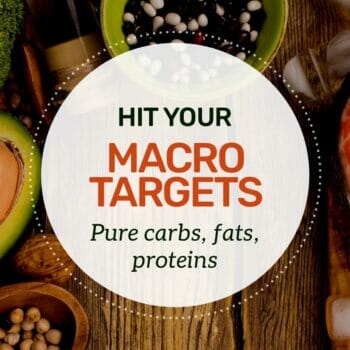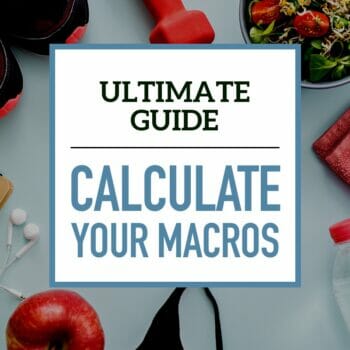A Macro Diet and Intuitive Eating: Learning to Eat Enough Instinctively
What is intuitive eating?
Most people think about intuitive eating as one’s natural ability to eat the right amount of food.
In reality, good intuitive eating is a learned behavior, which does not come naturally for most people.
The amount of food for your body is something you need to learn – and relearn as you age.
How a macros-based approach leads to intuitive eating
I developed the Macro Solution program with this in mind. A macro-based diet is an effective way to teach yourself how to eat right intuitively.
A macros-based approach is highly flexible and leads to freedom from food restrictions, obsessions, and deprivation. Many of my clients have been depriving themselves for a long time.
When counting macros, you don’t need to stress about food choices – or about “good” and “bad” foods. You learn how much food is appropriate based on your age, height, weight and lifestyle factors.
A macros-based approach:
- Improves nutritional quality by ensuring you get a balanced amount of macros.
- Gives you the ideal fiber amount by ensuring you’re eating more nutrient-dense foods).
- Promotes mindful eating – you understand what you are eating, and the amounts of macronutrients that are appropriate for you.
- Shows how your energy requirements change based on the exercise you do.
- Helps end deprivation, binging, and appetite issues.
- Results in weight loss and physical transformation.
An end to tracking and counting
Counting macros requires careful focus – but should you eat that way forever? Do you really want to be using the food scales forever? Or tracking every meal in MyFitnessPal?
Of course not!
A macro solution provides gratifying results, but even better, it leads to a lifetime of intuitive eating.
Intuitive eating comes about following your internal cues based on long-term habits. It’s more of a philosophy than a formula.
The macro approach is the “how-to” upon which you can build the right habits.
Recognizing the calorie amount of food is not intuitive
For many, years of strict dieting and disordered eating have messed up their hunger and fullness signals.
That’s why almost everyone underestimates fast food calories. This information needs to be learned first. By tracking and counting macros, you may learn that a foot-long Subway is too much food for someone of your size.
First step: stop the extreme restriction
With macro-based dieting, you give yourself permission to eat cupcakes, chocolate brownies, or ice cream.
You to keep these foods in their place and within the limitations of your required energy intake. Obsessive avoidance of these foods always backfires – at some point.
Yes, you can enjoy a cupcake and maintain (and even lose) weight. You learn to be around these foods without wanting to binge on them.
You can’t jump straight to intuitive eating. The right habits (for you) first need to be learned and instilled.
Second step: managing hunger
Managing hunger is critical.
Let’s say a 6-inch Subway is the appropriate caloric amount of fast food for your lunch. However, you choose the foot-long because you know you would be hungry after eating the 6-inch – or when you eat the 6-inch, you go eat some chocolates afterwards.
This could be a poor habit or an issue of managing hunger. Learning to eat slower can help to mitigate hunger. Macronutrient composition can also help.
Again this is part of the macro solution – eating appropriate amounts of fat, protein, and carb at each meal.
- Protein helps satisfy hunger, so learning to eat enough protein at each meal is critical.
- Loading your 6-inch sub with veggies also helps because it adds food volume but with few macros.
Hunger is normal and is part of our physiology. It’s not a negative emotion but simply a signal that your body needs more energy and is tapping into its reserves.
It’s okay to be hungry, and it doesn’t mean that hunger has to be satisfied immediately.
The pathway to intuitive eating
In our modern environment, the right eating habits are not intuitive.
They need to be learned, habituated, and then they become ‘intuitive’. One way to achieve this is by starting with a macro diet.
I hope that you can find freedom from constantly dieting by learning once and for all how much you should be eating more intuitively.
Sources
- Robinson, E., Aveyard, P., Daley, A., Jolly, K., Lewis, A., Lycett, D., & Higgs, S. (2013). Eating attentively: a systematic review and meta-analysis of the effect of food intake memory and awareness on eating. The American journal of clinical nutrition, ajcn-045245. link
- Paddon-Jones, D., Westman, E., Mattes, R. D., Wolfe, R. R., Astrup, A., & Westerterp-Plantenga, M. (2008). Protein, weight management, and satiety. The American journal of clinical nutrition, 87(5), 1558S-1561S. link
- Block, J. P., Condon, S. K., Kleinman, K., Mullen, J., Linakis, S., Rifas-Shiman, S., & Gillman, M. W. (2013). Consumers’ estimation of calorie content at fast food restaurants: cross sectional observational study. BMJ, 346, f2907. link
- Precision Nutrition - Choosing the best diet. link


 What Are The Best Macros For Weight Loss?
What Are The Best Macros For Weight Loss? How To Count Macros on a Vegan, Vegetarian, or Plant-Based Diet
How To Count Macros on a Vegan, Vegetarian, or Plant-Based Diet Out of a Macro For the Day? Here’s What to Eat
Out of a Macro For the Day? Here’s What to Eat Macros for Gaining Muscle and Cutting Fat
Macros for Gaining Muscle and Cutting Fat How to Calculate Your Macros for Body Transformation
How to Calculate Your Macros for Body Transformation